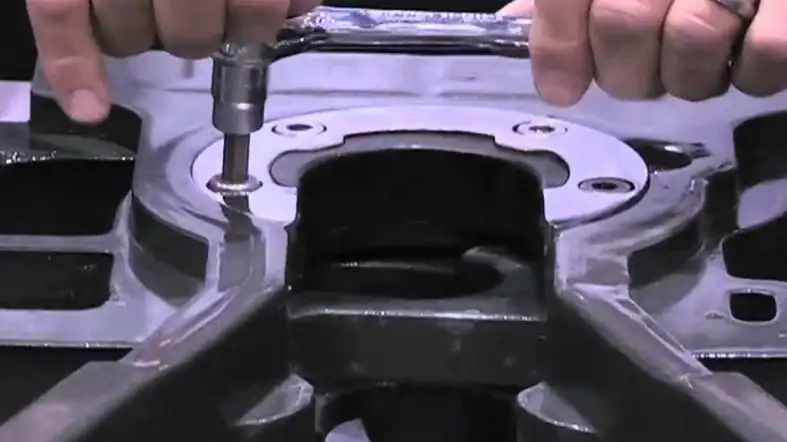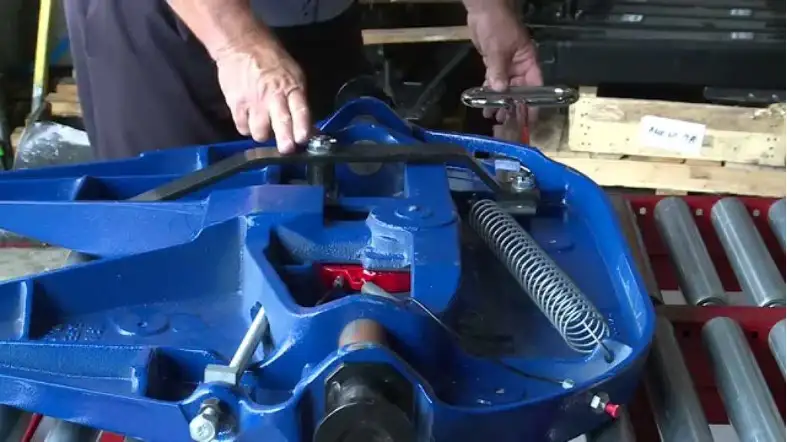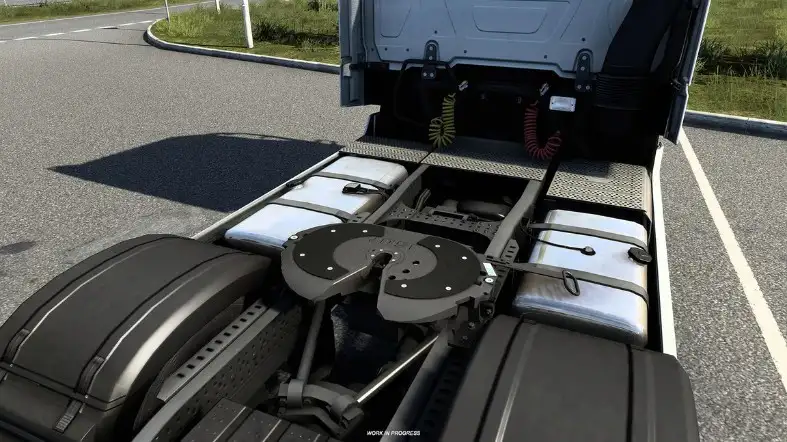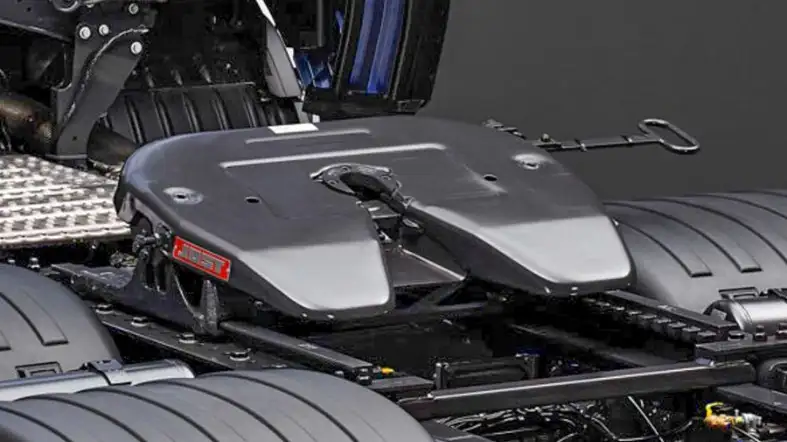It is very important to make sure your Jost fifth wheel is adjusted properly to avoid any accidents or damage.
A fifth wheel allows the trailer to move freely and independently from the truck and can help improve fuel economy.
But how to adjust a Jost fifth wheel?
This article breaks it down into easy steps to help you get the right adjustments and avoid problems as a result.
How to Adjust a Jost Fifth Wheel?
Before making any adjustments, it is important that you thoroughly inspect your trailer for any damage or issues that may affect how your fifth wheel operates.

Once you are sure that your trailer is in good condition, you can start making adjustments to the Jost fifth wheel.
Here is a step by step guide on adjusting a Jost fifth wheel:
Step 1: Release Handle
To adjust your Jost fifth wheel, start by releasing the handle on the Jost fifth wheel to unlock it from your trailer.
This will allow you to make any necessary adjustments without worrying about the trailer moving or shifting.
Also, be sure to secure any loose items in the trailer before making any adjustments, as this may affect how your Jost fifth wheel operates.
Step 2: Lock Jaw Inspection
If your Jost fifth wheel seems to be sitting too high or low, you may need to adjust the locking jaw to get a better fit.
To do this, simply loosen the bolts that hold the locking jaw in place and rotate it until it is positioned correctly on your trailer hitch.
Then tighten the bolts again to secure the locking jaw in place.
Once the locking jaw is adjusted properly, you should be able to easily tow your trailer without experiencing any issues with the Jost fifth wheel.
With regular use, it’s common for Jost’s fifth wheels to become misaligned over time and need to be readjusted.
To ensure that your Jost fifth wheel is working properly and offering a secure connection between your trailer and truck.
Be sure to take the time to regularly check and adjust your Jost fifth wheel as needed.
Step 3: Release Arm

Now, release the arm by turning the adjustment knob counterclockwise until it is fully disengaged.
Gently push down on the arm to ensure that it has fully lowered, and then retighten the adjustment knob clockwise.
Repeat this process for each of the arms as needed, making sure that all are parallel with one another and at an equal height.
You need to do some adjustments to your Jost fifth wheel to get it working properly. To do this, start by releasing the arm on the Jost fifth wheel.
So, to release the arm, turn the adjustment knob counterclockwise until it is fully disengaged.
Then, gently push down on the arm to make sure that it has fully lowered.
Once you have released the arm, retighten the adjustment knob clockwise.
Step 4: Lock Adjustment Inspection
When adjusting your Jost fifth wheel, it’s important to make sure that all of the locking mechanisms are working properly.
One way to do this is by performing an inspection on your Jost fifth wheel.
To start, you’ll need to locate the locking mechanism on your Jost fifth wheel.
This will typically be found at the bottom of the Jost fifth wheel, near where it attaches to your truck.
Once you’ve located this area, look for any signs of wear or damage that could indicate a locking mechanism issue.
Step 5: Tighten the Screws
Now you can tighten the screws on your Jost fifth wheel. Start by loosening each screw slightly, and then slowly tighten each one until you feel it click into place.
You’ll want to check that all of the locking mechanisms are aligned properly after you’ve adjusted each screw.
Once you have adjusted and tightened all of the screws on your Jost fifth wheel, it’s a good idea to recheck the locking mechanisms one more time.
This will help you ensure that your Jost fifth wheel is working at its best and providing a secure connection between your trailer and truck.
Step 6: Test the Jost Fifth Wheel Adjustments
Once you have made all of the necessary adjustments to your Jost fifth wheel, it is important to test them out and ensure that everything is working properly.
This can typically be done by driving your truck slowly forward and then pulling back in reverse, or by moving your trailer up and down on a set of moving ramps.
If you notice any issues or problems with your Jost fifth wheel during this test, it’s important to address them right away so that you can continue enjoying safe and secure hauling.
With regular maintenance and proper Jost fifth wheel adjustments, you can feel confident using your trailer in any situation.
With these simple steps, you can easily adjust your Jost fifth wheel to ensure that it is working properly and keeping your trailer safe.
Whether you are a professional driver or just starting, being able to make adjustments on your own can help prevent accidents and keep your Jost fifth wheel running smoothly.
How Does Jost’s Fifth Wheel Work?

Jost’s fifth wheel is a device that is typically used to connect semi-trailers to trucks, allowing for easy transport and maneuverability.
The first sensor in the system detects when the top of the fifth wheel comes close to the trailer’s skid plate.
At this point, a mechanism known as the jaws automatically opens.
These are used to grip and lock onto the bottom of the trailer, providing a strong connection that allows for smooth transport.
The second sensor tells us when the trailer’s kingpin is positioned in the fifth wheel correctly, and the third sensor lets us know when the fifth wheel’s safety latch is locked.
This ensures that the fifth wheel is securely attached to the truck and trailer, allowing for safe and efficient transportation.
While Jost’s fifth wheel provides a robust and reliable connection between semi-trailers and trucks, it can sometimes become difficult to adjust properly.
Why is it important to Adjust your Jost Fifth Wheel?
It is important to adjust the Jost fifth wheel for several reasons.
First and foremost, a properly adjusted fifth wheel ensures the safety of the vehicle and its occupants.
A fifth wheel that is not properly adjusted can cause the trailer to become detached from the truck, which can be dangerous and potentially result in an accident.
Another reason to adjust the fifth wheel is to ensure that the vehicle and trailer are operating at their maximum efficiency.
An improperly adjusted fifth wheel can cause excessive wear and tear on the truck and trailer, leading to costly repairs and reduced fuel efficiency.
In addition, an improperly adjusted fifth wheel can cause problems with the steering and handling of the vehicle.
This can make the vehicle difficult to control, especially at high speeds or in emergencies.
By adjusting the fifth wheel to the proper torque setting, you can ensure that the vehicle and trailer are operating smoothly and safely.
Overall, adjusting the Jost fifth wheel is an important part of maintaining the safety, efficiency, and performance of the vehicle and trailer.
Additional Tips and Tricks for Adjusting a Jost Fifth Wheel

Here are some additional tips and tricks for adjusting a Jost fifth wheel:
- Make sure the fifth wheel is properly attached to your vehicle. Follow the manufacturer’s instructions for attaching the fifth wheel to your car, and make sure it is securely fastened in place.
- Adjust the fifth wheel height. The height of the fifth wheel should be adjusted so that the kingpin of the trailer is in line with the fifth wheel’s locking jaws. This will help to ensure that the trailer is securely attached to your vehicle and will prevent the trailer from swaying or shifting while you are driving.
- Adjust the fifth wheel tension. The tension of the fifth wheel should be adjusted so that the locking jaws are securely holding the kingpin of the trailer. This will help prevent the trailer from coming loose or detaching from your vehicle while driving.
- Check the fifth wheel periodically. Regularly check the fifth wheel to make sure it is properly adjusted and that the locking jaws are securely holding the kingpin of the trailer. If you notice any problems with the fifth wheel, have it repaired or replaced as soon as possible.
By following these tips and tricks, you can properly adjust your Jost fifth wheel and ensure that your trailer is securely attached to your vehicle.
This will help to prevent accidents and ensure that you can safely and confidently tow your trailer.
FAQs about Adjusting A Jost Fifth Wheel
How Often Should I Check The Fifth Wheel?
You should check the fifth wheel regularly, at least once a month, to make sure it is properly adjusted and the locking jaws are securely holding the kingpin of the trailer.
If you notice any problems with the fifth wheel, have it repaired or replaced as soon as possible.
Is It Easy To Adjust A Jost Fifth Wheel?
Yes, adjusting a Jost fifth wheel is relatively easy.
However, you should always follow the manufacturer’s instructions and make sure the fifth wheel is securely fastened in place before adjusting it.
Can I Adjust A Jost Fifth Wheel Myself?
Yes, you can adjust a Jost fifth wheel yourself as long as you follow the above instructions and have the proper tools for the job.
Conclusion
Adjusting a Jost fifth wheel is an important part of maintaining the safety, efficiency, and performance of your vehicle and trailer.
By following the above tips and tricks, you can properly adjust your fifth wheel and ensure that your trailer is securely attached to your car.
This will help to prevent accidents and ensure that you can safely tow your trailer.
